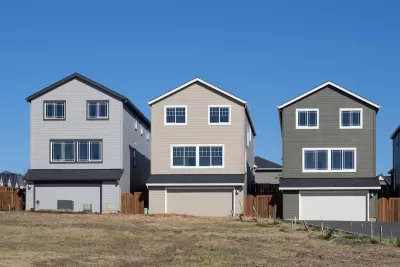We don’t often make a clear distinction between investors and speculators, which makes it harder to identify harmful behavior — and to find solutions for it.

Shelterforces' Miriam Axel-Lute makes a compelling case for using more precise language when discussing private actors in housing markets. While these terms are often used interchangeably, she argues there's a crucial distinction:
True housing investors put capital and work into improving properties, accept genuine risk, and seek reasonable returns over time. Think of someone who rehabilitates a deteriorating property and rents or sells it at fair market rates.
Speculators, by contrast, aim to profit purely from external market forces - like holding vacant land until nearby transit improvements boost its value, or buying up rental properties betting that housing shortages will drive up rents. They extract value without contributing meaningful improvements.
This distinction matters for policy discussions. As cities grapple with corporate purchases of single-family homes and vacant property speculation, being precise about different actors' roles and impacts can lead to better targeted solutions.
The piece also suggests that even individual homeownership often contains elements of speculation, since appreciation typically comes from location and market forces rather than property improvements. This insight helps explain why shared-equity homeownership models, which limit windfall gains, may be both fair and effective.
Read the full article for an exploration of how language shapes our understanding of housing market dynamics.
What do you think about this framework for distinguishing housing market actors? Does it align with what you observe in your community?
FULL STORY: What’s in a Name? Investors vs. Speculators

Maui's Vacation Rental Debate Turns Ugly
Verbal attacks, misinformation campaigns and fistfights plague a high-stakes debate to convert thousands of vacation rentals into long-term housing.

Planetizen Federal Action Tracker
A weekly monitor of how Trump’s orders and actions are impacting planners and planning in America.

In Urban Planning, AI Prompting Could be the New Design Thinking
Creativity has long been key to great urban design. What if we see AI as our new creative partner?

How Trump's HUD Budget Proposal Would Harm Homelessness Response
Experts say the change to the HUD budget would make it more difficult to identify people who are homeless and connect them with services, and to prevent homelessness.

The Vast Potential of the Right-of-Way
One writer argues that the space between two building faces is the most important element of the built environment.

Florida Seniors Face Rising Homelessness Risk
High housing costs are pushing more seniors, many of them on a fixed income, into homelessness.
Urban Design for Planners 1: Software Tools
This six-course series explores essential urban design concepts using open source software and equips planners with the tools they need to participate fully in the urban design process.
Planning for Universal Design
Learn the tools for implementing Universal Design in planning regulations.
Gallatin County Department of Planning & Community Development
Heyer Gruel & Associates PA
JM Goldson LLC
City of Camden Redevelopment Agency
City of Astoria
Transportation Research & Education Center (TREC) at Portland State University
Jefferson Parish Government
Camden Redevelopment Agency
City of Claremont



























